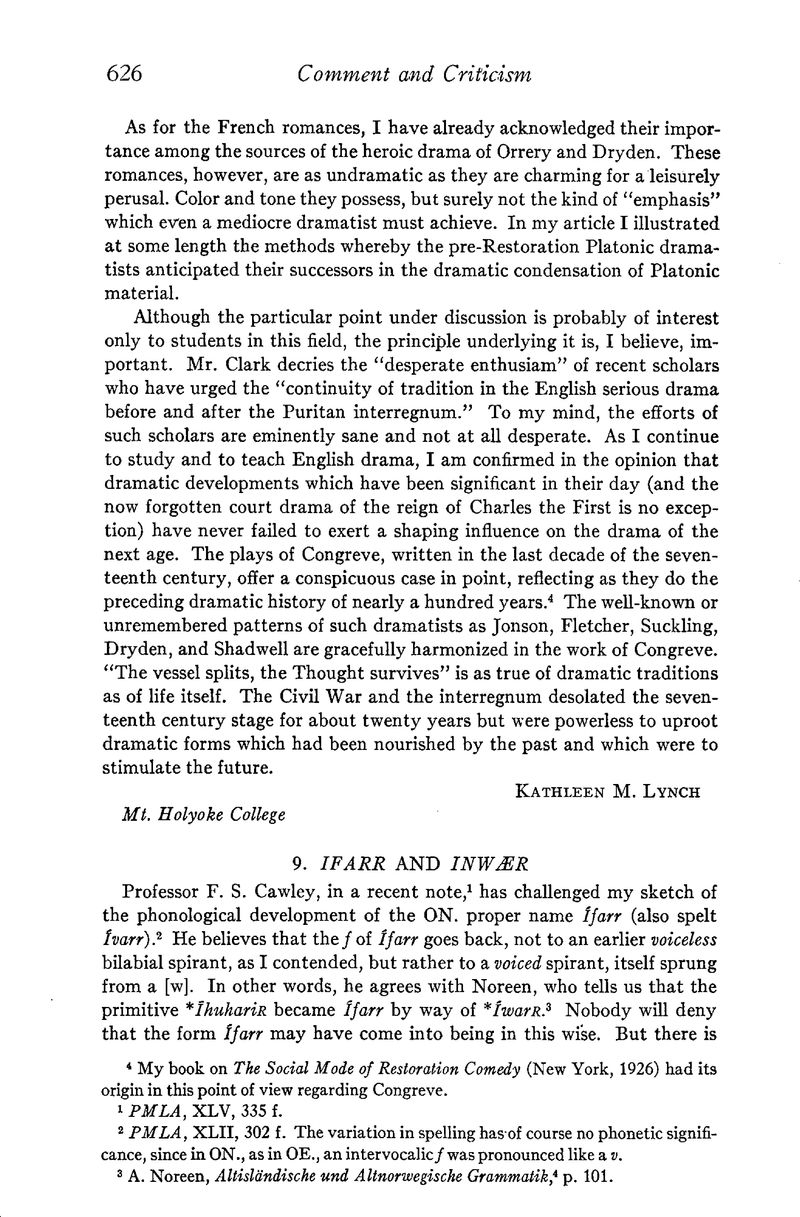No CrossRef data available.
Article contents
9. Ifarr and Inwær
Published online by Cambridge University Press: 02 December 2020
Abstract

- Type
- Comment and Criticism
- Information
- Copyright
- Copyright © Modern Language Association of America, 1930
References
1 PMLA, XLV, 335 f.
2 PMLA, XLII, 302 f. The variation in spelling has of course no phonetic significance, since in ON., as in OE., an intervocalic f was pronounced like a v.
3 A. Noreen, Altisländische und Altnorwegische Grammatik,4 p. 101.
4 A. Noreen, op. cit., pp. 231 f. (§317, Anm. 2).
5 A. Noreen, op. cit. §222. In a note, loc. cit., Noreen says that the shift is “jedenfalls aus dem anfang der vikingerzeit bezeugt,” i.e. the eighth century. It took place earlier, no doubt, under weak stress, as the Svarteborg inscription indicates.
6 K. Luick, Hist. Gram. der engl. Sprache, I, 186 (§201).
7 Note that Heusler's examples (Altisl. Elementarbuch,2 §139, Anm. 1) both show loss of h and retention of w after a liquid.
8 Germ. *ufna- and *ugna-, *uhna- may be unrelated words, see Falk and Torp, Norwegisch-Dänisches Etym. Wörterbuch s. v. ovn.


